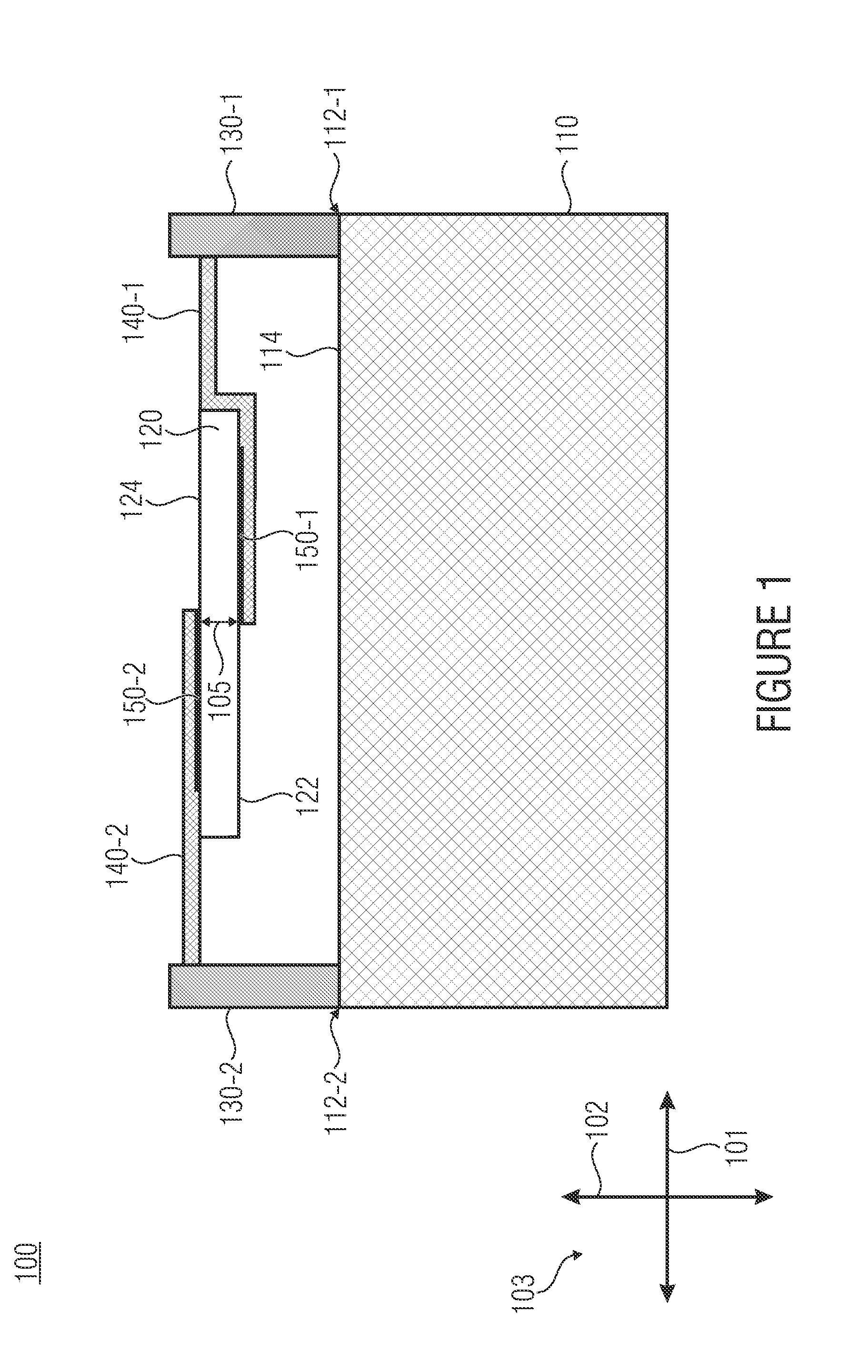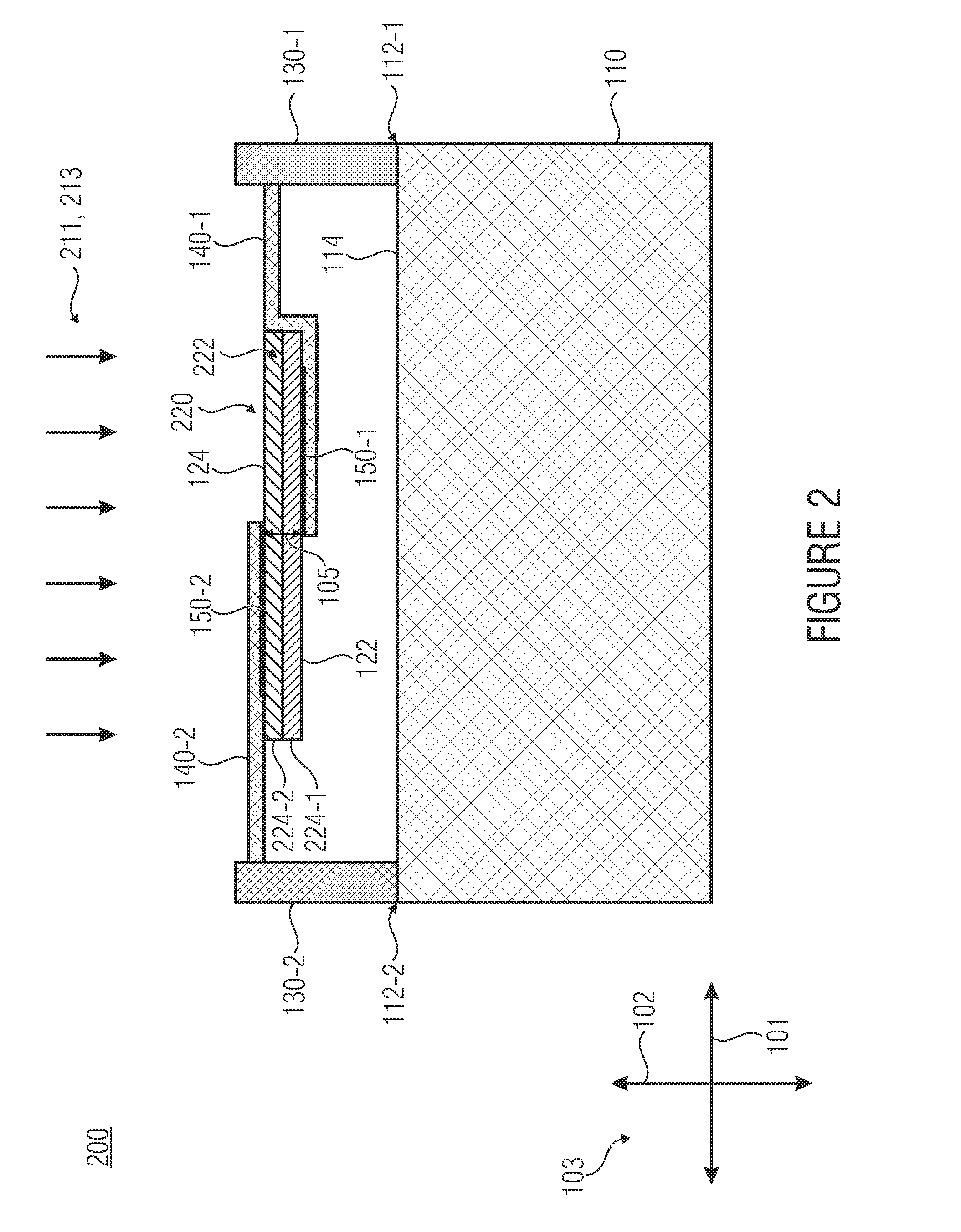Sensor and method of producing a sensor
a sensor and sensor technology, applied in the field of sensors and a production method of sensors, can solve the problems not being able to suppress the predominant low-frequency components, and not being able to solve the problem of reducing the price of devices,
- Summary
- Abstract
- Description
- Claims
- Application Information
AI Technical Summary
Benefits of technology
Problems solved by technology
Method used
Image
Examples
Embodiment Construction
[0028]Before the present invention will be explained in more detail below by means of the figures, it shall be pointed out that in the embodiments presented in the following, elements which are identical or identical in function are provided with the identical reference numerals in the figures. Therefore, descriptions of elements having identical reference numerals are mutually exchangeable and / or mutually applicable in the various embodiments.
[0029]FIG. 1 shows a cross-sectional view of a sensor 100 in accordance with an embodiment of the present invention. As is shown in FIG. 1, the sensor 100 comprises a substrate 110, a membrane 120, first and second spacers 130-1, 130-2, a first support structure 140-1 and a second support structure 140-2. Here, the first and second spacers 130-1, 130-2 are arranged on the substrate 110. In the sensor 100 shown in FIG. 1, the first support structure 140-1 is supported, laterally next to the membrane 120, by the first spacer 130-1 and contacts a...
PUM
 Login to View More
Login to View More Abstract
Description
Claims
Application Information
 Login to View More
Login to View More - R&D
- Intellectual Property
- Life Sciences
- Materials
- Tech Scout
- Unparalleled Data Quality
- Higher Quality Content
- 60% Fewer Hallucinations
Browse by: Latest US Patents, China's latest patents, Technical Efficacy Thesaurus, Application Domain, Technology Topic, Popular Technical Reports.
© 2025 PatSnap. All rights reserved.Legal|Privacy policy|Modern Slavery Act Transparency Statement|Sitemap|About US| Contact US: help@patsnap.com



